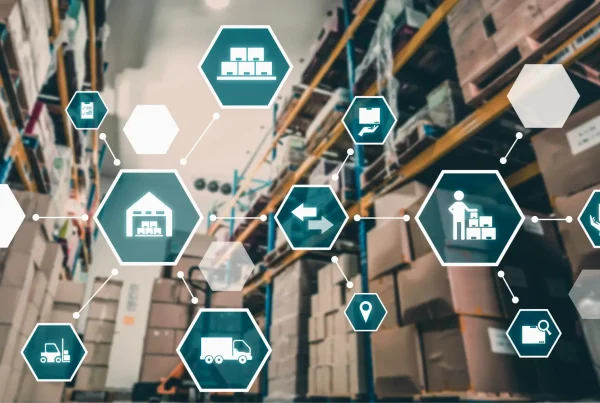In an age where efficiency is paramount, inventory optimization software stands as a beacon of progress for businesses. But why do you think we need this in the retail landscape? Simply put, inventory optimization software is a sophisticated tool that enables businesses to manage their stock levels effectively, ensuring that the right products are available at the right time, minimizing the issue of overstocking or understocking.
But how does it achieve this, and what are the tangible benefits for a business? Let’s dig a bit deeper!
Balance Between Inventory and Sales
Retailers often grapple with the delicate balance of maintaining enough inventory to meet customer demand without overburdening their storage with unsold products. This balance is crucial for several reasons. Having too much inventory ties up capital that could be used elsewhere in the business, while too little inventory risks lost sales and dissatisfied customers. Inventory optimization software addresses this issue head-on by using real-time data and predictive analytics to forecast demand accurately. This approach not only ensures customer satisfaction but also optimizes cash flow and reduces storage costs.
Value of Automation in Inventory Management
Why should retailers move away from traditional inventory management methods? The answer lies in the power of automation. Automated inventory management, a key feature of inventory optimization software, streamlines the process of ordering, storing, and selling inventory. This automation reduces the time and effort required to manage inventory manually, freeing up staff to focus on other critical aspects of the business. Furthermore, automated systems are less prone to errors than manual processes, leading to more accurate stock levels and fewer inventory-related issues.
Risks of Not Using Inventory Replenishment Software
Relying on guesswork for inventory management leads to a chaotic and inefficient system, characterized by frequent overstocking and understocking. This approach not only leads to financial losses but also damages customer relationships. Inventory optimization software mitigates this risk by providing data-driven insights for making informed decisions. This precision in inventory planning avoids pitfalls of guesswork, ensuring a smooth and efficient inventory management process.
Harnessing the Power of Inventory Optimization Software
Understanding AI Inventory Optimization
AI inventory optimization represents a significant leap forward in inventory management. But what makes it so special? AI algorithms analyze vast amounts of data, including past sales trends, seasonal fluctuations, and market changes, to make highly accurate predictions about future demand. This level of insight is invaluable for retailers, as it allows them to anticipate and respond to changes in customer demand quickly and effectively.
Decision Making Through Inventory Planner Software
Leveraging AI enables retailers to optimize inventory levels, reduce waste, and improve customer satisfaction. AI algorithms also identify patterns and trends that humans might overlook, leading to more innovative and effective inventory strategies. In essence, AI inventory optimization enables retailers to stay one step ahead in a rapidly evolving market.
Significance of Retail Allocation Software
Streamlining the Process
Retail allocation software plays a critical role in inventory management by ensuring that products are distributed efficiently across various locations. As an example, this software enables retailers to determine the optimal quantity of each product to send to each store, based on factors like sales history, store size, and local market trends. The result is a more balanced and effective distribution of inventory, improving sales potential and customer satisfaction.
Use Cases
Scenario 1: Consider a retailer with multiple store locations. Each store serves a unique customer base with different preferences and needs. Retail allocation software analyzes sales data from each store to determine the most popular products and the ideal inventory levels for each location. By tailoring the inventory to match local demand, the retailer maximizes sales opportunities and minimizes waste, leading to a more efficient and profitable operation.
Scenario 2: Consider a retailer who uses inventory planner software to manage a diverse range of products. The software analyzes sales data and customer demand patterns to identify which products are most popular and which are underperforming. Based on this analysis, the retailer adjusts their inventory strategy, focusing on stocking higher-demand items and reducing orders for less popular products. This targeted approach leads to more efficient use of resources, higher sales, and improved customer loyalty.
Scenario 3: Consider a retailer facing seasonal fluctuations in demand. The retailer uses an inventory optimization solution to analyze historical sales data and predict upcoming trends. Based on this analysis, the retailer adjusts their inventory levels to ensure they have enough stock to meet the expected increase in demand, while avoiding overstocking during slower periods. This proactive approach enables the retailer to maintain optimal inventory levels throughout the year, leading to a more stable and profitable business.
Exploring Inventory Optimization Solutions
Inventory optimization solutions revolutionize stock level management by merging essential inventory management elements—forecasting, replenishment, allocation, and reporting—into one cohesive system. This unified approach not only provides retailers with a full, clear view of their inventory but also streamlines their decision-making process, allowing for more informed and strategic choices.
Such integration transforms a retailer’s operations significantly. By synchronizing various inventory management activities, these solutions foster a unified, strategic approach. This alignment across different functions enhances operational efficiency, cuts down costs, and boosts customer satisfaction, ensuring every aspect of inventory management is working in concert towards common business objectives.
Advantages of Using Inventory Planner Software
The benefits of using inventory planner software are significant. It allows retailers to optimize their inventory levels, reducing the risk of stockouts and overstocking. This optimization not only improves financial performance but also enhances customer satisfaction by ensuring that popular products are always available. Let’s understand its benefits in detail.
- Enhanced Forecasting Accuracy: Inventory planner software utilizes advanced algorithms and historical data analysis to predict future demand more accurately. This precision reduces instances of overstocking and understocking, ensuring that inventory levels are aligned with actual market needs.
- Cost Reduction: Optimizing inventory level allows businesses to lower their holding costs. This includes reduced expenses related to storage, insurance, and obsolescence, particularly for perishable or seasonal items.
- Improved Cash Flow Management: Efficient inventory management directly impacts cash flow. Maintaining optimal stock levels enables businesses to free up capital that would otherwise be tied up in excess inventory, allowing for better allocation of financial resources.
- Increased Operational Efficiency: Automating the inventory management process streamlines operations, reducing the time and effort required for manual stock checks and order processing. This leads to increased productivity and allows staff to focus on more strategic tasks.
- Data-Driven Decision Making: Inventory planner software provides detailed insights and analytics, enabling businesses to make informed decisions based on real-time data. This data is used to identify trends, forecast demand, and make adjustments to inventory strategies accordingly.
- Enhanced Customer Satisfaction: Keeping popular products always in stock enables businesses to improve customer satisfaction and loyalty. This readiness to meet customer demand also leads to increased sales and a stronger market position.
- Scalability: Inventory planner software scales with the business, providing consistent support regardless of inventory size or diversity, which is crucial to expand company operations.
- Risk Mitigation: Inventory planning software mitigates risks associated with market volatility, supply chain disruptions, and changing consumer trends.
- Sustainability: Efficient inventory management leads to less waste, contributing to more sustainable business practices. This is particularly important for companies looking to reduce their environmental footprint and adhere to sustainability standards.
- Competitive Advantage: In a competitive market, having the right product at the right time is a significant advantage. Inventory planner software enables businesses to stay ahead of competition by efficiently managing their inventory based on accurate, up-to-date information.
Fact 💡
Did you know AI in the supply chain market is projected to reach $41.23 billion by 2030, at a CAGR of 38.8% from 2023 to 2030?
Future of Retail Inventory Optimization Solutions
In conclusion, inventory optimization software is not just a tool; it’s a transformative force in the world of retail. By leveraging the power of technology, retailers achieve a level of efficiency and effectiveness that was previously unattainable. Whether it’s through AI-driven forecasting, automated inventory management, or integrated optimization solutions, this technology is reshaping the retail landscape. As we look to the future, one thing is clear: the success of retail businesses will increasingly depend on their ability to adopt and effectively utilize inventory optimization software.
Frequently Asked Questions
Q. How does AI inventory optimization enhance the efficiency of business operations?
AI inventory optimization utilizes advanced algorithms to analyze sales data and market trends, enabling businesses to forecast demand with higher accuracy. This leads to smarter inventory decisions, reducing overstocking or understocking, and ensuring that resources are used efficiently.
Q. What role does inventory replenishment software play in inventory management?
Inventory replenishment software automates the process of restocking products, using data-driven insights to determine when and how much inventory to reorder. This reduces manual workload, minimizes the risk of stockouts, and maintains a consistent level of inventory.
Q. Can retail allocation software improve customer satisfaction?
Yes, retail allocation software ensures that the right products are available at the right locations, based on customer demand and sales trends. This targeted approach to inventory distribution meets customer needs more effectively, thereby enhancing overall satisfaction.
Take the Next Step
Embrace technology to its fullest to master the delicate balance between sales and inventory, paving the way for superior retail management.
Impact Analytics InventorySmart™—Inventory planning software that ensures the right products get to the right place at the right time.





